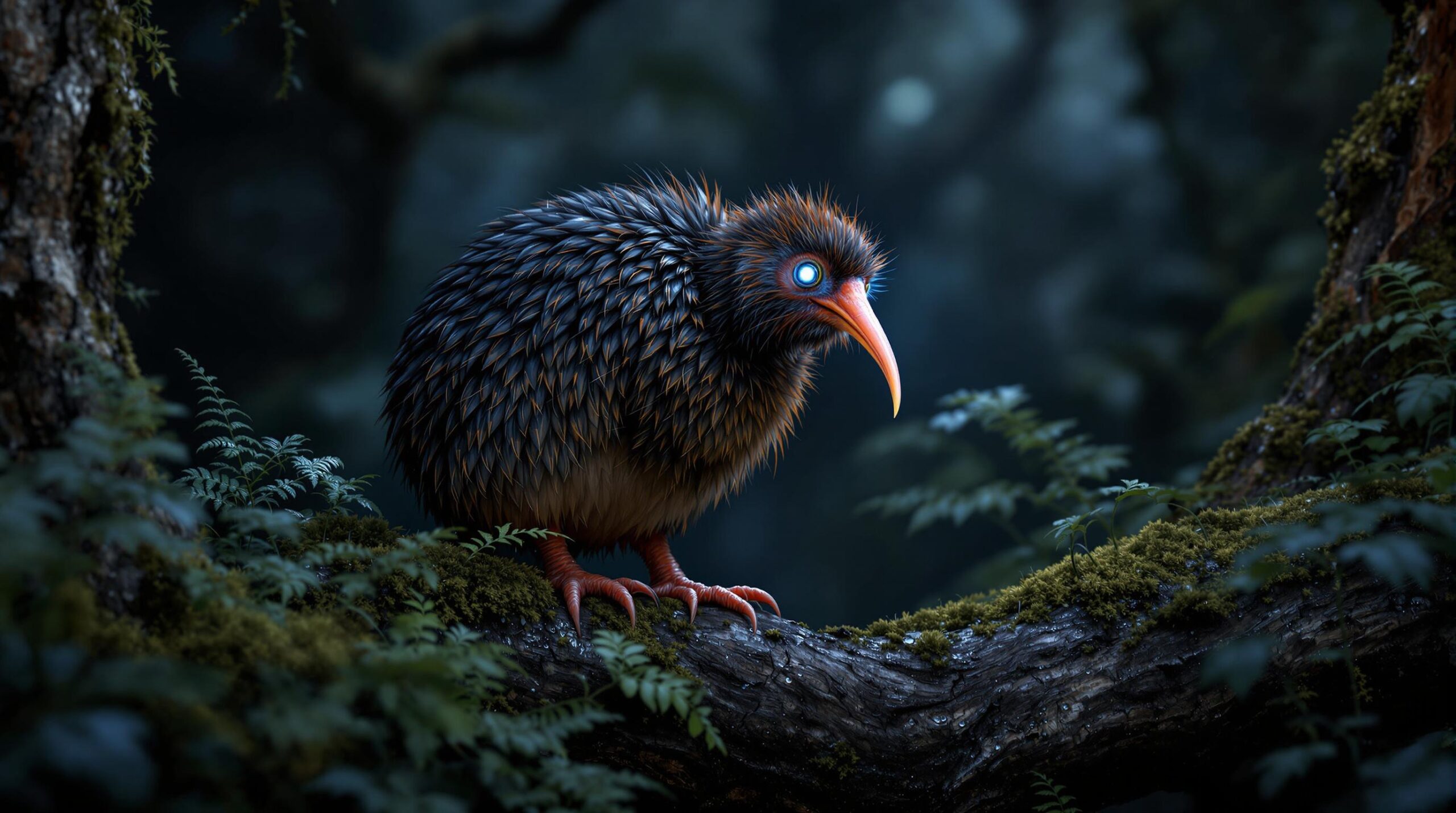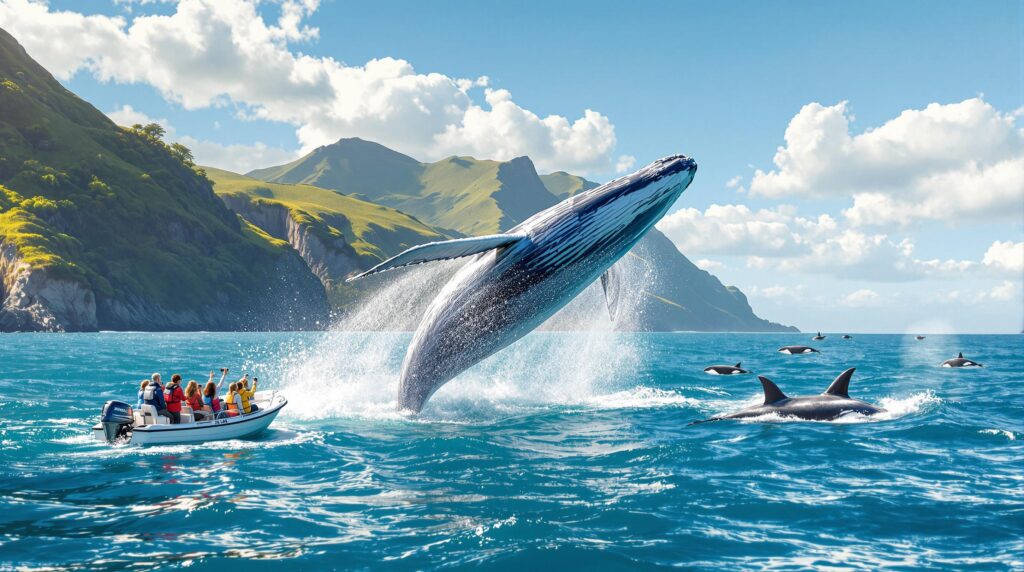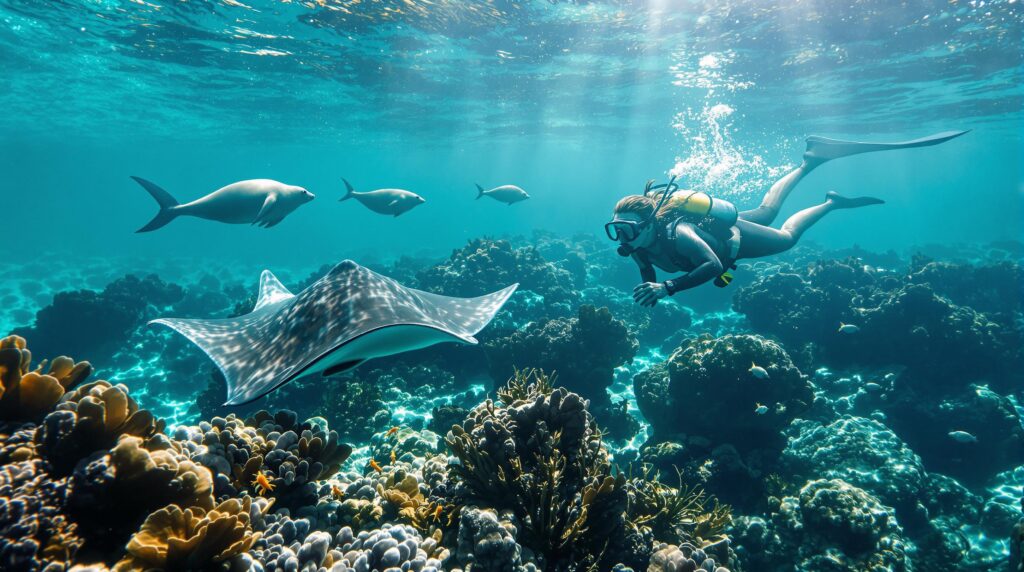I’ve spent countless hours wandering through New Zealand’s wild landscapes and hidden trails, learning the secrets of the mysterious kiwi bird along the way. Over time, my journeys have led me to quiet kiwi houses tucked away in ancient forests, and vibrant sanctuaries where these elusive nocturnal creatures can be observed in an environment that mimics their natural habitat. This narrative weaves together unforgettable personal experiences, practical travel tips, and conservation insights that have transformed my understanding of kiwi sightings in the wild. I invite you to join me on this heartfelt exploration of nature, culture, and the magic that New Zealand holds for every Kiwi Travel enthusiast.
The blend of rugged terrain with tender conservation efforts paints a picture as vivid as the landscapes I encountered. I recall early mornings full of birdsong, evenings immersed in the soft rustle of native foliage, and the unmistakable charm of encountering a kiwi under the veil of night. This journey is more than a travel guide—it’s a personal memoir of nature, culture, and the shared passion among fellow Kiwi Family explorers, including insights from KiwiCo and KiwiBotanicals enthusiasts. Each step of the way, encounters with heritage sites, unique accommodations like KiwiCamp, and even modern conveniences like KiwiSaver have enriched my adventures, making every moment a memory to cherish.
Exploring kiwi bird sightings in the wild
The first time I encountered a kiwi in a nocturnal house, I felt as if I had stepped into an untouched realm, where history, nature, and tradition converge. Wandering amidst native bush with the gentle glow of carefully designed lighting, each sound and shadow told a story of survival and resilience. Known as New Zealand’s national symbol, the kiwi is a secretive creature, hard to spot in its natural habitat due to adaptive behavior, deforestation, and predation. Yet, special sanctuaries across the country recreate the dark, damp ambiance of a forest by night, offering rare moments of connection with a living national treasure.
My journey has taken me to some of the most scenic and well-regarded kiwi houses. There is a palpable sense of calm when you enter these sanctuaries. The carefully controlled conditions not only simulate a natural habitat but also serve as a hub for conservation and educational programs. One memorable instance was at a facility in Northland, where I observed kiwis foraging under expertly simulated conditions. In the quiet of the night, the soft rustle of leaves and the distant call of native birds created a magical symphony that resonated deep within me.

During my travels, I was also introduced to a number of conservation initiatives that showcase the intricate balance between human intervention and natural preservation. For example, programs that focus on captive breeding and controlled rearing of kiwi chicks play a critical role in population recovery. Witnessing a kiwi chick in the early stages of development, under the careful observation of dedicated conservationists, left me feeling deeply connected to New Zealand’s unique wildlife. These efforts to simulate natural conditions in captivity illustrate not only the technical skill but also the profound love locals have for their native fauna.
For those who relish detailed encounters with nature, I recommend checking out insights on where to see these fascinating creatures. For instance, visitors can find more practical information about kiwi bird sightings at travel guides focusing on kiwi bird habitats. Other helpful resources include detailed maps and travel advice on where to visit kiwi sanctuaries, and fascinating articles offering historical context on kiwi conservation efforts at Kiwi Conservation Studies.
My love for nature has grown alongside my enthusiasm for Kiwi Travel innovations. Embracing modern travel solutions like Kiwi.com and Kiwi Connection, I found it easy to incorporate conservation experiences into a broader exploration of New Zealand’s diverse wildlife. Every experience, from the quiet moments in a kiwi house to the bustling energy of local wildlife preserves, served as a reminder of the extraordinary bond between humans and nature.
Personal stories from kiwi sanctuaries
One particular evening remains etched in my memory. Wandering in a confined, specially designed kiwi enclosure, I was struck by the silent, rugged beauty and the intricate interplay between natural and mimicked environments. Walking slowly, each step brought forth small surprises—a glimmer of light on a dewy leaf, or the soft shuffle of a kiwi’s feet. Conversations with dedicated guides, who seamlessly blended scientific knowledge with local folklore, further deepened my appreciation. Their anecdotes about kiwi breeding programs and successful reintroduction strategies were filled with passion and hope.
During my visit, I met families who had come to share this unique experience. One local group, deeply involved in efforts spearheaded by organizations such as KiwiGreen and KiwiCamp, explained how their community supported conservation through volunteer programs and educational tours. They even mentioned how partnerships with companies like KiwiCo and KiwiSaver have bolstered these initiatives. Their warmth and dedication resonated, symbolizing the interconnectedness of every effort to protect these enchanting birds.
Before leaving the enclosure, I noted a list of recommendations posted by the sanctuary—handy tips including the best times to visit, what to wear, and how to capture the perfect photograph. Here’s a quick list I like to share with friends:
- 🐦 Visit early evening to maximize your chance to see kiwis as they become active.
- 🌲 Wear comfortable clothing that blends with nature, supporting a seamless experience alongside nature.
- 📸 Bring a good camera with night-mode settings to capture the low-light magic.
- 🎒 Plan a guided tour for informed insights and engaging conservation stories.
- 💚 Follow ethical practices to support wildlife conservation, much like initiatives of the Kiwi Family community.
Each moment spent within the natural, regulated confines of a kiwi sanctuary reminded me how fragile yet resilient these birds are. Environments that replicate the natural settings of the kiwi have not only become havens for them but also serve as living museums where visitors can witness the fruits of dedicated conservation efforts. These experiences reinforce that the act of traveling does more than satisfy wanderlust—it actively supports local commitments to preserving natural heritage.
Curiosity and conservation blend beautifully when exploring kiwi bird sightings. My heart swells with pride knowing that every traveler, whether a seasoned Kiwi Travel expert or a first-time visitor with Kiwi Family, contributes to a legacy of environmental stewardship. The journey through these sanctuaries is a vivid testimony to the commitment of local communities and international organizations alike, all pacing together towards a sustainable future.
Experiencing kiwi houses and conservation programs
Stepping into one of New Zealand’s renowned kiwi houses is like entering a vibrant celebration of nature and tradition. Over the years, I have visited a variety of these sanctuaries spread across the North and South Islands. Each kiwi house offers its own flavor of conservation, blending interactive tours with immersive habitats that replicate a nocturnal forest. The careful design of these enclosures helps ensure that the native birds thrive, even in a managed setting. Here, the balance between human education and animal conservation is delicately maintained.
Many facilities, such as the Kiwi North Kiwi House in Whangarei, showcase state-of-the-art environments where visitors witness kiwis foraging for their natural diet. This particular location, with its modern conservation programs, stands as a highlight among kiwi houses. It is not uncommon to see families marveling at the sight, as local guides explain the importance of predator control and habitat simulation. These controlled settings not only offer a chance to observe the birds but also raise awareness about the ongoing struggles that wild populations face.
Such sanctuaries also serve as a gateway for broader conservation programs. At centers like Auckland Zoo and Rainbow Springs Nature Park, a combination of captive breeding and educational tours makes each visit an enlightening experience. The nightly routines of the birds, as replicated under artificial darkness, allow for unparalleled insights into their behavior and adaptation. My own encounters in these places have been filled with moments of quiet reflection and joy. I often find myself comparing the dedication of these programs with the leadership seen in sustainable initiatives like KiwiBotanicals and KiwiGreen. These programs serve as beacons of hope for kiwi conservation.
The dedication of local conservationists, coupled with the cooperation of government and private companies, has enhanced the conditions for these fascinating creatures. Educational tours are run by passionate locals who shed light on everything from dietary habits to successful rearing programs. The blend of technological suppleness and old-world wisdom makes every visit both instructive and inspiring. For example, the conservation and breeding programs often include guided tours where experts share details of the meticulous work required. Information is provided through interactive displays, neatly organized into neat sections often supported by helpful literature such as pamphlets on recent kiwi hatching programs and conservation reports available at local bird watching guides.
One of my favorite aspects of these tours is the candid discussion about how technology and tradition merge in the field of wildlife conservation. In one table I prepared during my travels, the roles of various kiwi houses and their unique features were clearly laid out. Take a look at the summary below:
| 🌟 Location | 🌟 Special Feature | 🌟 Conservation Focus |
|---|---|---|
| Northland Kiwi House | Realistic nocturnal habitat | Breeding & rearing programs |
| Auckland Zoo | Night-time display “The Night” | Operation Nest Egg recovery |
| Rainbow Springs | Guided kiwi encounter tours | Captive hatching and survival support |
Travelers can also refer to detailed guides on where to observe kiwi birds. Websites such as kiwi bird location guides and wildlife conservation reports offer extensive insights. These guides often emphasize the importance of not disturbing the natural behavior of the birds—a prime concern echoed in programs associated with Kiwi Travel networks.
Several aspects of the kiwi houses bring immense satisfaction and practical knowledge to the visitor. Lists of do’s and don’ts help you experience the sanctuary while respecting the habitat. Here’s one I noted during my visit:
- 🌟 Do follow guided tour instructions meticulously.
- 🌟 Do support conservation efforts by engaging in sponsorship programs.
- 🌟 Don’t use flash photography inside the nocturnal enclosures.
- 🌟 Do ask about volunteer opportunities with local kiwi groups.
- 🌟 Don’t stray from designated paths within the facility.
In addition, many kiwi houses have close ties with regional tourism initiatives sponsored by innovative travel brands like KiwiCamp and Kiwi Connection. Their support ranges from state-of-the-art booking systems to curated travel experiences, ensuring that every visit is safe, enriching, and contributes to broader conservation goals. I have personally experienced the benefit of these partnerships during multiple visits across the islands, which further enhanced my appreciation of New Zealand’s relentless commitment to preserving its natural heritage.
Each kiwi house not only nurtures the endangered bird but also offers a unique window into New Zealand’s past and present. The blend of historical philosophies and modern technology ensures that every visitor gains insight into how conservation strategies are continuously evolving. This deeper understanding is reflected in community-led efforts, educational programs, and sustainable tourism practices that have a lasting impact on both visitors and wildlife alike. The partnership between traditional knowledge and contemporary solutions—inspired by innovations from Kiwi.com and KiwiSaver—is pivotal in supporting these ambitious projects.
Every visit to a kiwi house reminds me of the immersive experiences that await any nature lover who is willing to explore off the beaten path. The intimate connection between environment, technology, and local passion creates an experience that is as educational as it is magical, making each tour a cherished part of my travel memoirs.
Navigating conservation challenges and sustainable tourism
The journey through New Zealand’s conservation efforts is a vivid showcase of resilience and ingenuity. Facing challenges from deforestation, invasive predators, and human-induced environmental shifts, local communities and conservation groups have joined forces to protect the kiwi. I’ve witnessed firsthand the profound impact of sustainable tourism practices that support these efforts, blending unique travel experiences with honest conversations about environmental stewardship.
During my travels, I’ve explored numerous facets of conservation that extend well beyond the kiwi houses. Many sanctuaries incorporate strategies like predator exclusion, captive breeding, and comprehensive habitat restoration. In one remarkable program, eco-friendly practices helped increase the survival rate of wild kiwi populations from a mere 5% to an impressive 70%. Such achievements are not just statistical improvements—they are heartfelt victories achieved through collaboration between government agencies, passionate volunteers, and innovative companies such as KiwiGreen and KiwiBotanicals.
Walking along trails that lead to fenced reserves, I often paused to reflect on the harmonious blend of nature and conservation technology. Carefully designed sanctuaries, with their darkened enclosures that mimic the native bush, allow these flightless birds to thrive even in captivity. The practices in place at these sites are genuinely transformative. Educational programs chartered by local experts, supported by modern innovations like Kiwi Travel, emphasize that every individual—whether a dedicated Kiwi Family member or a casual visitor—has a role in preserving this treasure.
What makes these conservation challenges even more engaging is the level of public participation. Visitors are frequently invited to join volunteer programs, sponsor kiwi chicks, or simply attend guided tours that emphasize hands-on interaction with conservation practices. These programs foster a deep respect for nature and create communities of informed conservationists. I have taken part in several such programs, where discussions about nutrient cycles, invasive species control, and habitat recovery filled long afternoons with inspiration and practical knowledge.
A key part of this sustainable tourism model is transparency. Information boards, interactive maps, and digital guides frequently highlight the ongoing work to protect native species. I recall one striking display at a wildlife centre that featured before-and-after photographs of kiwi habitats. These visuals, enhanced by local insights and expert commentary, painted a clear picture of how proactive measures—often underwritten by organizations like Kiwi Habitat Projects and Conservation Initiatives—are transforming bleak landscapes into thriving ecosystems.
For travelers, this chapter of conservation is more than just a behind-the-scenes glimpse—it’s a call to action. I’ve compiled some essential tips into a structured list to help you navigate these sustainable practices:
- 🌱 Support local conservation efforts by joining guided tours and volunteer programs.
- 🌱 Choose eco-friendly travel options with services provided by Kiwi Travel innovators.
- 🌱 Respect the natural habitat by strictly observing sanctuary guidelines.
- 🌱 Educate yourself on native species and participate in workshops offered by kiwi conservation centers.
- 🌱 Engage with community initiatives that promote environmental stewardship and sustainable practices.
Community-led initiatives often work hand in hand with tourism. Through partnerships with companies like KiwiCamp and Kiwi Connection, sustainable tourism not only provides economic benefits but also fosters a better understanding of how to protect endangered species. These collaborations create a network that supports local farmers, conservation projects, and even niche adventure companies such as native bird hiking tours and seal watching excursions.
To help illustrate the sustainable impact of these endeavors, I created a detailed table that summarizes various conservation programs and their milestones. Notice how each program contributes to an integrated approach to environmental responsibility:
| 🌟 Program | 🌟 Key Initiative | 🌟 Measured Impact |
|---|---|---|
| Predator Control | Rat and stoat exclusion | Increased kiwi survival rate |
| Captive Breeding | Egg hatching and rearing programs | Higher release success |
| Habitat Restoration | Native bush replanting | Recovered ecological balance |
This table is more than just numbers and words—it represents hope, commitment, and the shared values of communities around New Zealand. The combination of personal visits, guided tours, and modern interventions gives everyone a tangible way to contribute. I still remember discussing these achievements with conservationists who admired the technological strides made by global companies like Kiwi.com and support programs under KiwiSaver. Their innovative approaches provide much-needed funds and resources for ongoing projects.
Each conservation strategy embeds lessons on responsibility and the impact of individually making a difference. My experiences taught me that sustainable tourism and conservation are intertwined. By actively participating and supporting these eco-friendly practices, tourists help ensure that future generations will also be able to experience the timeless beauty of the kiwi. Every step taken in these programs builds a legacy that goes far beyond a single visit—it creates a sense of unity and purpose that resonates with my deep love for this land.
The continuous effort to safeguard the kiwi also highlights broader lessons about environmental ethics and the responsibilities that come with exploring natural wonders. The adaptability of these programs inspires travelers like me to support initiatives that foster a harmonious relationship between humans and nature, where every action, no matter how small, plays an integral role in the grand scheme of conservation.
Exploring New Zealand wildlife through organic travel experiences
The hidden treasures of New Zealand extend well beyond the kiwi bird. As a seasoned traveler, I relish the opportunity to immerse myself in the abundance of native wildlife, from the majestic albatross to the lively seals and playful dolphins. My journeys have taken me through lush landscapes that offer glimpses of unique fauna bolstered by conservation efforts and modern eco-tourism initiatives. The thrill of spotting these animals in their natural habitats is best shared with fellow explorers who value authentic Kiwi Travel experiences, supported by vibrant communities such as the Kiwi Family.
Exploring the wild side of New Zealand involves a delicate balance between personal adventure and responsible travel. The warm embrace of an untouched coastal walk, the distant sound of native calls at dawn, and the soft whispers of ancient forests have left me in awe of the power of nature. The country’s initiative to preserve and revitalize local habitats is evident in every inch of land—from protected marine reserves to meticulously maintained sanctuaries. During one memorable hike near the rugged terrains of the South Island, I encountered a group of curious sea lions basking on a sunlit rock. Their unrestrained presence, captured perfectly through the lens of a local photographer I met, was a moving spectacle that showcased nature at its most genuine.
One of the highlights of these adventures is discovering diverse wildlife through sustainable tours. Regions like Kaikoura offer exceptional wildlife experiences, where guided tours lead you deep into the heart of natural reserves teeming with marine life. Innovative tour operators, those who partner with initiatives like Kiwi Travel and promote organic adventures, ensure that every excursion remains respectful of the natural habitat. Whether it has been a boat tour to see migrating whales or a coastal hike with Kiwi Connection insights, every experience was steeped in both wonder and responsibility.
The integration of technology into these explorations enhances the experience without compromising the integrity of the environment. I have found that tools like interactive maps and real-time guides, often provided by forward-thinking companies such as KiwiCamp, make it easier to navigate through these pristine environments responsibly. For instance, during my travels I used digital apps heavily influenced by modern travel innovations similar to those offered by KiwiBotanicals. These tools provided live updates on weather conditions, animal migration patterns, and even allowed the community to track conservation efforts in real time.
The versatility of New Zealand’s wildlife can be appreciated through various lenses. One of the most memorable experiences was witnessing the playful antics of native frogs and the silent vigilance of the rarely seen Stewart Island weka. Such encounters serve as a testament to the country’s commitment to conservation. I recall watching the locals share knowledge on native species, with emphasis on their ties to indigenous Māori culture, making every moment deeply personal and rich with local lore. Exploring these narratives helped me form a more profound connection to the land and its wildlife.
Every traveler venturing into these wild terrains is bound to compile a checklist for a successful journey. Here’s a vibrant list of tips, complete with my personal recommendations:
- 🌟 Pack reusable water bottles to reduce plastic waste during hikes.
- 🌟 Maintain silence during wildlife encounters to avoid disturbing natural behavior.
- 🌟 Use eco-friendly gear that minimizes environmental impact.
- 🌟 Stay on marked trails to protect fragile ecosystems.
- 🌟 Engage with local guides to enrich your understanding of environmental conservation.
In addition to these practical tips, I treasure the creative ways New Zealand celebrates its wild wonders. Tourist boards and local conservation groups often display visually striking infographics and maps. I once came across a visual guide detailing the best places to see native birds and marine life, intertwined with beautiful illustrations of local flora. These creative resources are often elaborated on websites like New Zealand wildlife guides and eco-tourism portals, embodying the spirit of self-sustaining travel and environmental education.
Another remarkable facet of my journeys was meeting passionate individuals whose lives are dedicated to protecting New Zealand’s natural treasures. Their work, ranging from local fishers involved in marine conservation to indigenous community leaders promoting cultural heritage, has deeply influenced my travel style. Over shared meals and long conversations under star-studded skies, I learned how every sustainable travel choice helps protect and nurture the environment. Their stories often mentioned partnerships with pioneering organizations such as Kiwi.com and community initiatives powered by KiwiSaver, reminding me that every effort, no matter how small, contributes to a larger mission.
The spontaneous beauty of New Zealand lies not only in its landscapes but also in the connections fostered along the way. A treasured memory is a spontaneous roadside chat with a local conservationist who detailed efforts to protect the endangered yellow-eyed penguin. Their passion resonated with the same energy I felt watching playful sea lions on secluded beaches. These experiences blend seamlessly with the ethos of sustainable tourism, where every action fosters a deeper respect for nature. With every step, I valued the chance to contribute to the preservation of this magical country, affirming my belief in a travel philosophy that supports both adventure and environmental responsibility.
These organic travel experiences have reshaped the way I view nature and tourism. Every moment spent in the wild, every conversation with a local guide, and every shared smile with fellow travelers reinforces a simple truth: New Zealand not only offers breathtaking landscapes but also a reminder of our responsibility to nurture and protect them.
FAQ
❓ What is the best time to see kiwi birds in New Zealand?
Kiwi birds are primarily nocturnal, so visiting during early evenings or booking a nighttime guided tour at a kiwi house greatly enhances the chances of an encounter.
❓ How do kiwi houses simulate the natural habitat of the kiwi?
Most kiwi houses recreate the dark, damp environments of native forests through controlled lighting, ambient noises, and natural plant materials collected from the wild, offering a realistic setting for the birds.
❓ Are there interactive programs available for visitors?
Yes, many kiwi sanctuaries and wildlife centers offer guided tours, educational displays, and even hands-on volunteer programs that allow visitors to participate in conservation efforts.
❓ How can I support kiwi bird conservation during my visit?
You can join sponsorship programs, volunteer with local conservation groups, and follow ethical guidelines during tours. Additionally, booking through eco-friendly channels like Kiwi Travel and supporting initiatives such as those powered by KiwiSaver ensures that your visit contributes to ongoing conservation efforts.
❓ What other wildlife can I expect to see while exploring New Zealand?
Beyond the kiwi, you may encounter native species like the tuatara, morepork, various native geckos, albatrosses, seals, and even unique marine life along the coasts. Many eco-tours incorporate sightings of these species in their itineraries, providing a rich, immersive experience.
Hi, I’m Mark, a 38-year-old travel writer who traded his backpack for a peaceful life in New Zealand. After exploring dozens of countries, I’ve found my home among native bush, coastal walks, and the welcoming spirit of Kiwis. I now write about hidden gems, soulful places to stay, and local tips to help travelers experience the real New Zealand – slow, beautiful, and full of meaning.


